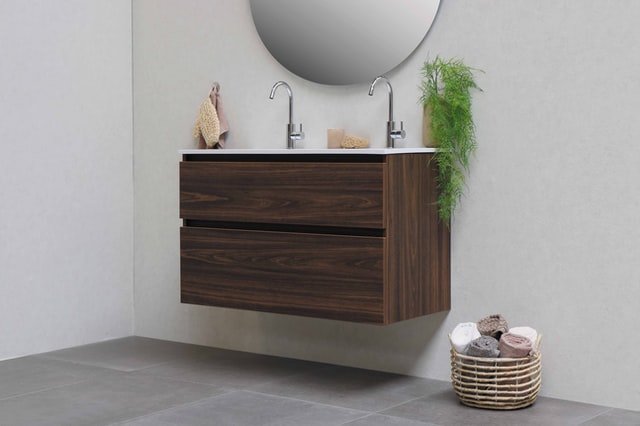Mounting a sink can be a tricky task. Many people work with plumbers to do the job, but find that it can be pricey at times. You might as well learn how to do it by yourself if you want to save some money – and you definitely will want to, when you see how easy it actually is.
Are you looking to install a mount sink in your bathroom? The process is actually quite simple, but it can be nerve-racking if you don’t know what you are doing. Picking the right tools and equipment and following the proper steps are vital if you want to make sure that your mount sink is properly installed.
To help you out, this article breaks down each step on how to install a wall mount sink as well as some useful tips to make the process much easier than it already is.
- Tools and Materials Needed for Installing a Wall Mount Sink
- Steps on How to Install a Wall Mount Sink
- Helpful Tips on Installing a Wall Mounted Basin

Tools and Materials Needed for Installing a Wall Mount Sink
You will need the following tools to install a wall mount sink:
- A hammer
- Caulk gun
- Tape measure
- pencil
- spirit level
- safety glasses
- Utility knife
- screwdriver/ screws
- Bracket mounting screws
- bracket mounting nuts
- wall mount sink brackets
- concrete anchors
Steps on How to Install a Wall Mount Sink
If you are planning to install a mount sink, it may seem like a difficult task. However, with the right tools and following these simple steps, installing your own mount sink will be easy as pie.
Step 1: Determine basin height.
To install a mount sink, you need to determine where you want the sink to be and the ideal basin height or how high it should be.
First, decide where you want the sink to go. The best place for it is usually in a corner near a water supply, but anywhere that’s convenient will work as long as there’s space for the faucet, pipes, and drain hookup.
Measure ideal basin height. Next, measure the distance from the floor up to where you want the sink to be, and then add a few inches for good measure. This will give you an idea of how much space is needed for installation purposes.
Step 2: Take down measurements.
Take down measurements. The next step to installing a mount sink is to take down measurements of the basin, including:
- The distance from the top of the basin to the fixing holes on either side.
- The distance between those fixing holes and anchor points around the edge of your bathroom countertop or vanity top.
- Measurements for where you will be placing your new mount sink in relation to walls, cabinets, vanities or any other fixtures that may be present in your room.
Step 3: Cut a hole in the wall.
Now that you have the measurements, it’s time to cut the outlines on the wall. First, use a drywall saw to cut a hole in your wall that is the same size as the sink. Make sure you cut at an angle with enough room at both ends so that you can fit a bucket under the sink without hitting any pipes or wires. Also, make sure that everything is level throughout the process.
Step 4: Attach the mounting bracket to sink
Attach the mounting bracket to the sink. Make sure that you’ve followed all of the manufacturer’s instructions and have attached all of the components of your new faucet before attaching or even thinking about moving your sink.
Securely fasten the sink and mounting bracket together with screws, making sure they line up perfectly. If they don’t align perfectly, it could cause leaks or cracks in your sink in the future.
Step5: Level the sink and mounting bracket
If you’ve followed the steps above, the mounting bracket should now be attached to your sink. The next few steps will help you ensure that your mount is level and straight, which will make sure it’s ready for use:
Leveling the Sink: Place a level across both sides of the rim of your sink, ensuring that they are perfectly parallel with one another. If not, mark where any adjustments need to be made on each side using a pencil or pen. Once marked, remove your sink and adjust its position accordingly so that when you reattach it, it’s level across both sides.
Straightening Out Your Mounting Bracket: Place a carpenter’s square against one edge of your mounting bracket. It should align perfectly with both sides–if it doesn’t, loosen up any screws holding down those edges and tighten up those along opposite sides until everything lines up perfectly.
Step 6: Slide the sink onto the hooks of the mounting bracket.
Make sure that both hooks are facing you and that they are facing outwards from the wall, so you can see them when you look at them from outside of your bathroom door. This is important because if they don’t face outwards and inwards towards each other instead of facing straight up or down then your sink will not be secure enough.
Step 7: Secure the sink onto the mount and wall.
Now it’s time to secure the sink onto the mount and wall. The most common way to do this is with a basin wrench, but you can also use a drill if you’re more comfortable with that. If you’re installing a double bowl sink, make sure both bowls are properly aligned before attaching them together using screws or bolts in each corner of the unit. Make sure they are flush against one another and level with where they sit on top of each other so that there is no gap between them when installed.
Once you have everything lined up correctly, tighten any nuts or bolts holding them together until they feel snug but not too tight—it should take some effort to turn them by hand once everything is secured in place.
Step 8: Caulk around all edges of the sink and let dry.
Caulk is a sealant, which means it creates a waterproof area between two surfaces. In this case, caulking around the edges of the sink will create a barrier between the mounting bracket and the wall.
Caulk can also be used to seal gaps between your new sink and existing counters or other surfaces. This will prevent water leaks from occurring in those areas.
Step 9: Connect water lines.
Now that you have the sink in place, it is time to connect the water lines.
Connect water lines to the faucet: First, connect the hot and cold supply lines to their respective valves on top of your faucet. This can be done by unscrewing them from their current position and screwing them back in with new fittings. The only difference between these two fittings will be which direction they are facing. Make sure that both connectors are connected firmly before closing up your faucet handle.
Connect the water line to drain: You’ll need a pipe wrench for this step—you may have one laying around already; if not, buy some pliers with rubber grips so as not to scratch anything up during installation procedures! Connecting this line involves attaching an elbow joint onto each end of a length of PVC pipe and then attaching them together using another elbow joint. The last step is connecting it all together with a “female threaded” adapter piece—this part fits inside both elbows so as not to interfere with any other aspects of installation work being done at this point in time.
Helpful Tips on Installing a Wall Mounted Basin
- Use a level to ensure that your new sink is perfectly level.
- Make sure you have enough clearance between the wall and your faucet for water to flow freely. This is especially important if you are installing a pull-down or pull-out sprayer in addition to a regular faucet, as this will require more room than just one simple faucet on its own.
- Mark where your new mount sink will be mounted with a pencil so that it’s easy for you and anyone else who installs it after you. Be sure not to make any marks directly onto walls covered with wallpaper, however—you’ll need this area free of writing so that no damage is done when attaching the brackets!
- Before drilling into any walls or cabinets, check for studs behind them first (or other obstacles). If there are no studs present at all, use concrete anchors instead of screws to keep everything stable beneath mounting hardware like hinges or brackets
- Make sure you have enough space for the basin itself and for the plumbing that will connect it to your home’s water supply.
- Ensure that all pipes are disconnected from the main supply line before installation begins.
- Check that the floor is level using a spirit level.
- Make sure your wall is sturdy enough to support the wall mounted basin.

Conclusion
Hopefully, you’ve now had a chance to read through the instructions carefully and know exactly what steps you need to follow in order to complete the job. Make sure you have all the materials listed at hand and follow each step properly—it’s never a bad idea to stop and re-read the instructions if you find yourself unsure of what the next step is. If you follow these tips, you should be able to complete your own mount sink install in no time at all.
Frequently Asked Questions about How to Install a Wall Mounted Basin
Yes, silicone caulking will hold your wall mounted basin in place. The silicone will also adhere to the sink and make it watertight.
The key to making sure that the caulking holds is making sure that you get the right kind of silicone. You need an adhesive-grade silicone caulk, rather than a paint-grade caulk. The adhesive-grade caulking will be more flexible and less likely to crack or fail over time.
Yes, you can wall mount any sink. You just need to make sure that it’s a sink that is compatible with wall mounting. In some cases, this means choosing a special wall-mountable model when you’re at the store. In other cases, though, you’ll just need to get some hardware and do it yourself.
The point of a floating vanity is to give your bathroom a more spacious and open feel, while also giving the opportunity to create an elegant, classic look in your bathroom.
0 Comments for “A Simple Guide On How To Install A Wall Mount Sink”